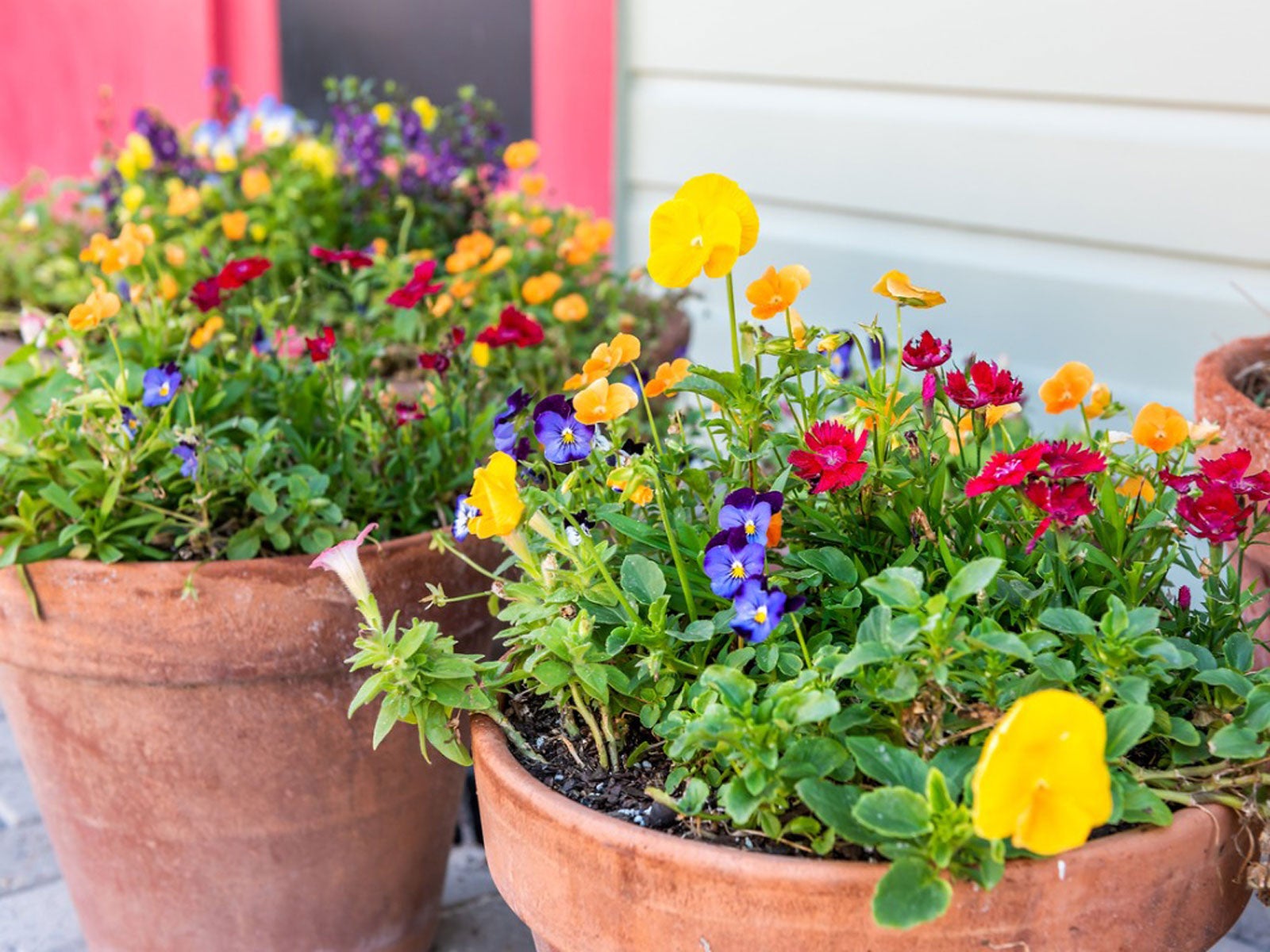Container Garden Fertilizer: Tips On Feeding Potted Garden Plants


Unlike plants grown in the ground, container plants are unable to draw nutrients from the soil. Although fertilizer doesn’t completely replace all the useful elements in the soil, regularly feeding container garden plants will replace nutrients leached out by frequent watering and will keep the plants looking their best throughout the growing season. Check out the following tips for fertilizing outdoor container plants.
How to Feed Potted Plants
For anyone wishing to sustain container gardening projects over the long term, feeding is a skill well worth mastering. Knowing which fertilizer types to use, and when to use them, are key to the longevity of your potted plants. Here are some common types of container garden fertilizer and how to get the best from them:
- Water-soluble fertilizer: Feeding container garden plants with a water-soluble fertilizer is easy and convenient. Just mix the fertilizer in a watering can according to label directions and use it in place of watering. As a general rule, water-soluble fertilizer, which is quickly absorbed by plants, is applied every two to three weeks. Alternatively, you can mix this fertilizer to half strength and use it weekly.
- Dry (granular) fertilizer: To use dry fertilizer, just sprinkle a small amount evenly over the surface of the potting mix then water well. Use a product labeled for containers and avoid dry lawn fertilizers, which are stronger than necessary and are flushed out quickly.
- Slow-release (time-release) fertilizers: Slow-release products, also known as time or controlled release, work by releasing a small amount of fertilizer into the potting mix every time you water. Slow-release products formulated to last three months are good for most container plants, although a longer-lasting fertilizer is useful for container trees and shrubs. Slow-release fertilizer can be mixed into the potting mix at planting time or scratched into the surface with a fork or trowel.
Tips on Feeding Container Garden Plants
There’s no doubt that container garden fertilizer is critical but don’t overdo it. Too little fertilizer is always better than too much.
Don’t start fertilizing container garden plants immediately after planting if the potting mix contains fertilizer. Start feeding plants after about three weeks, as the built-in fertilizer is usually leached out by that time.
Don’t feed container plants if the plants look droopy or wilted. Water well first, then wait until the plant perks up. Feeding is safest for the plants if the potting mix is damp. Additionally, water well after feeding to distribute fertilizer evenly around the roots. Otherwise, the fertilizer may scorch roots and stems.
Always refer to the label. Recommendations can vary depending on the product.
Sign up for the Gardening Know How newsletter today and receive a free copy of our e-book "How to Grow Delicious Tomatoes".

A Credentialed Garden Writer, Mary H. Dyer was with Gardening Know How in the very beginning, publishing articles as early as 2007.